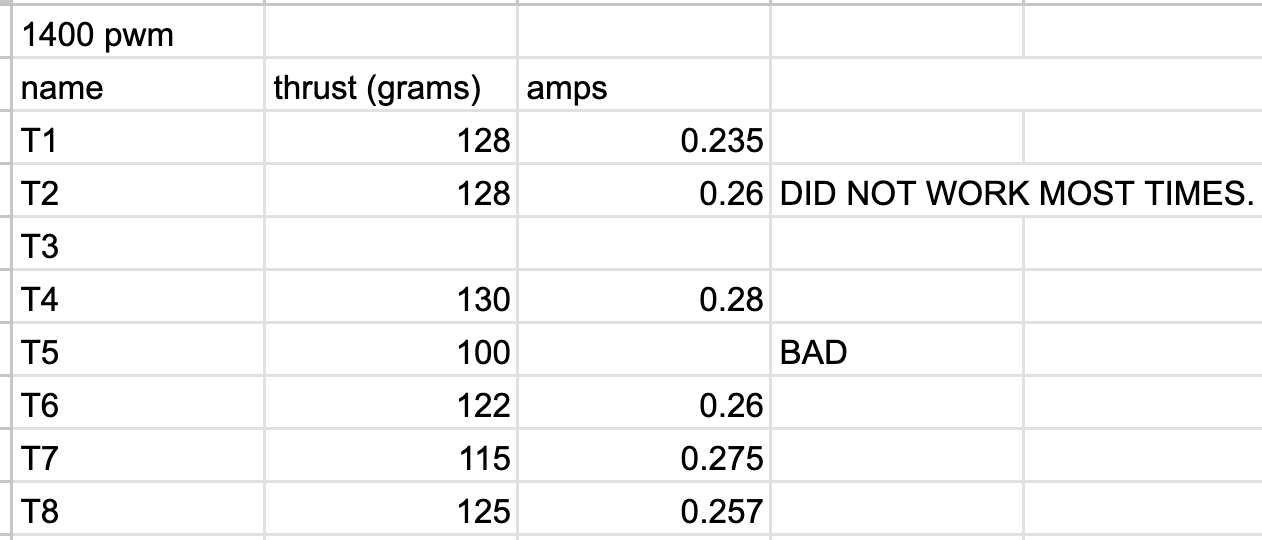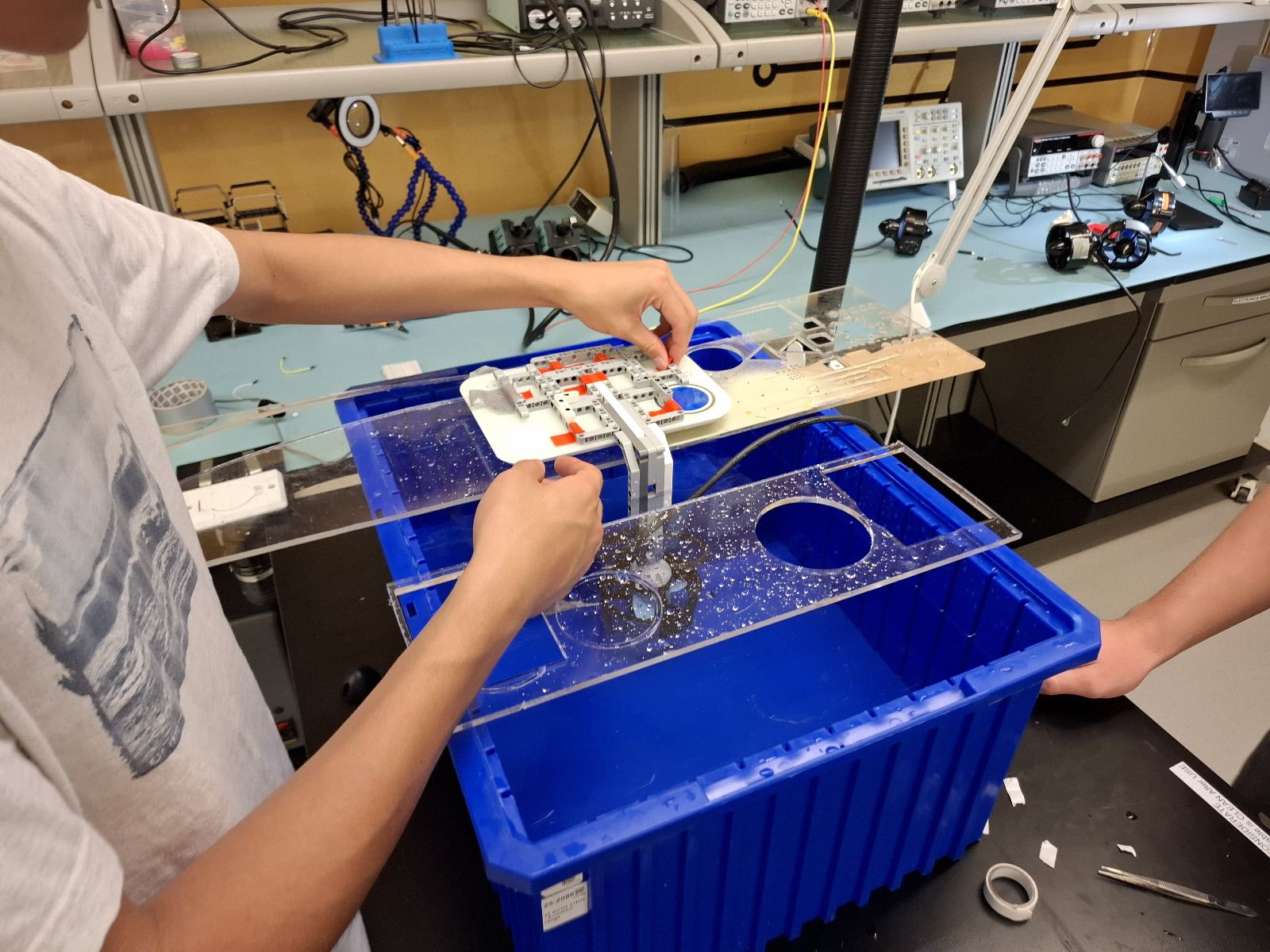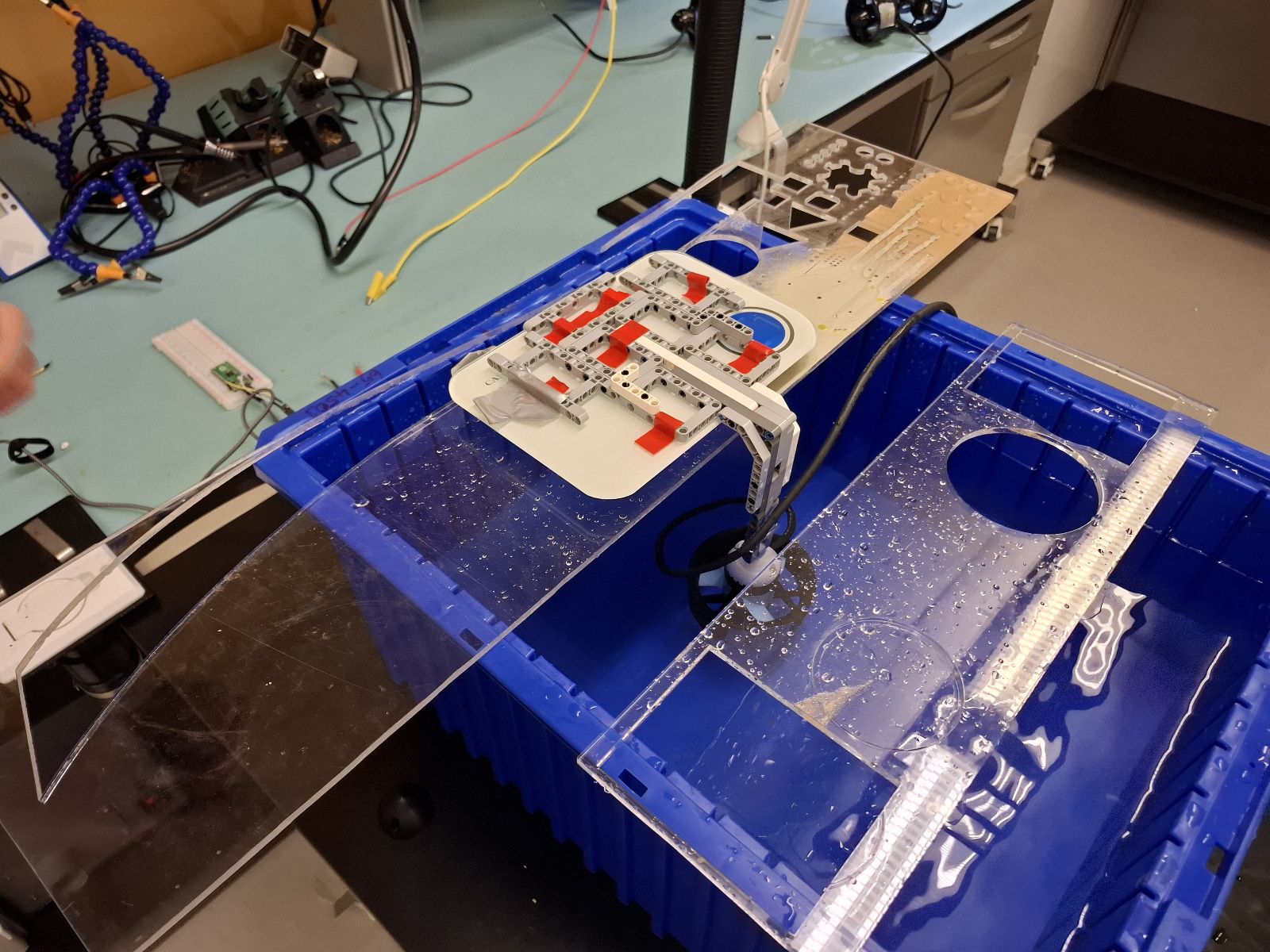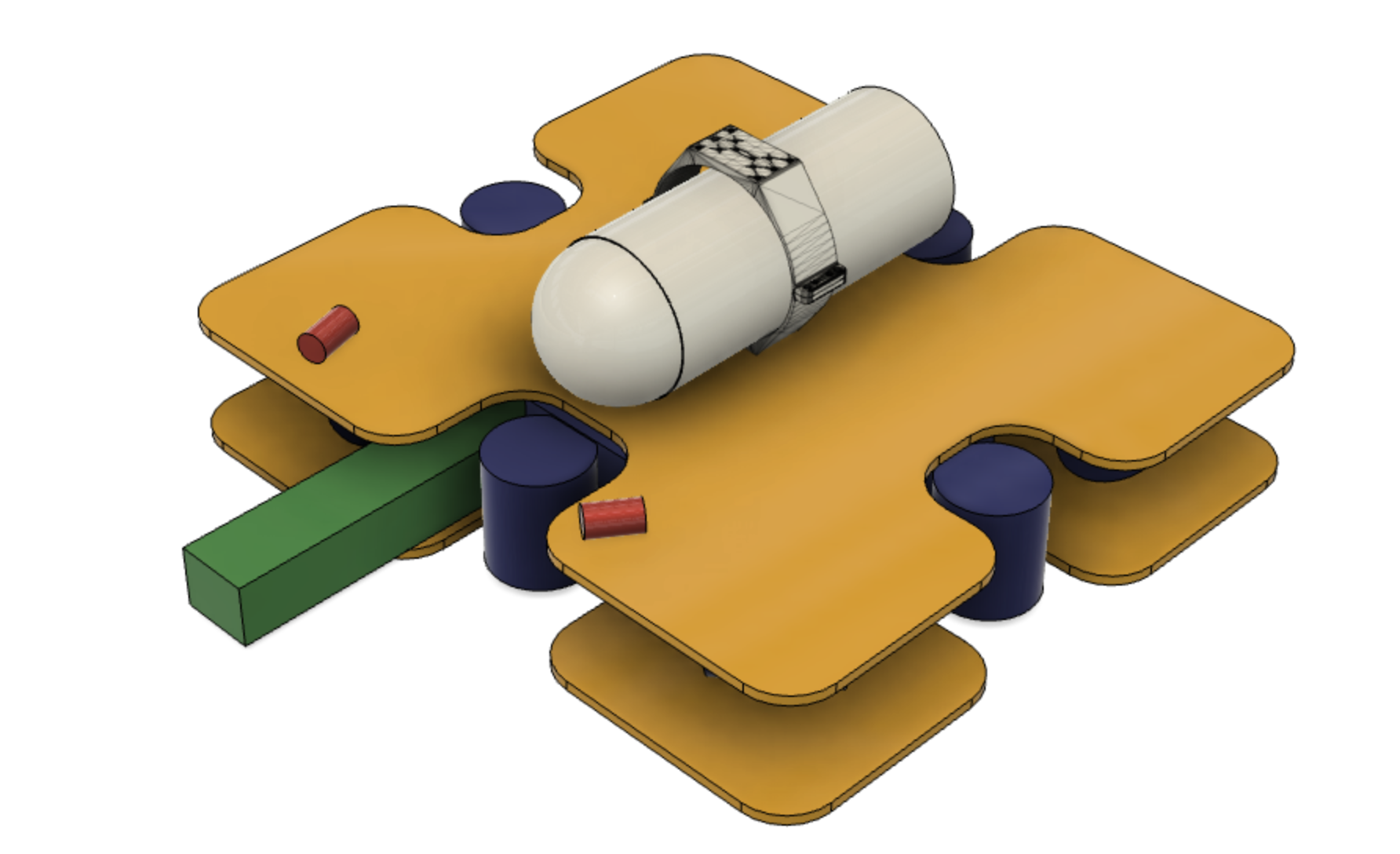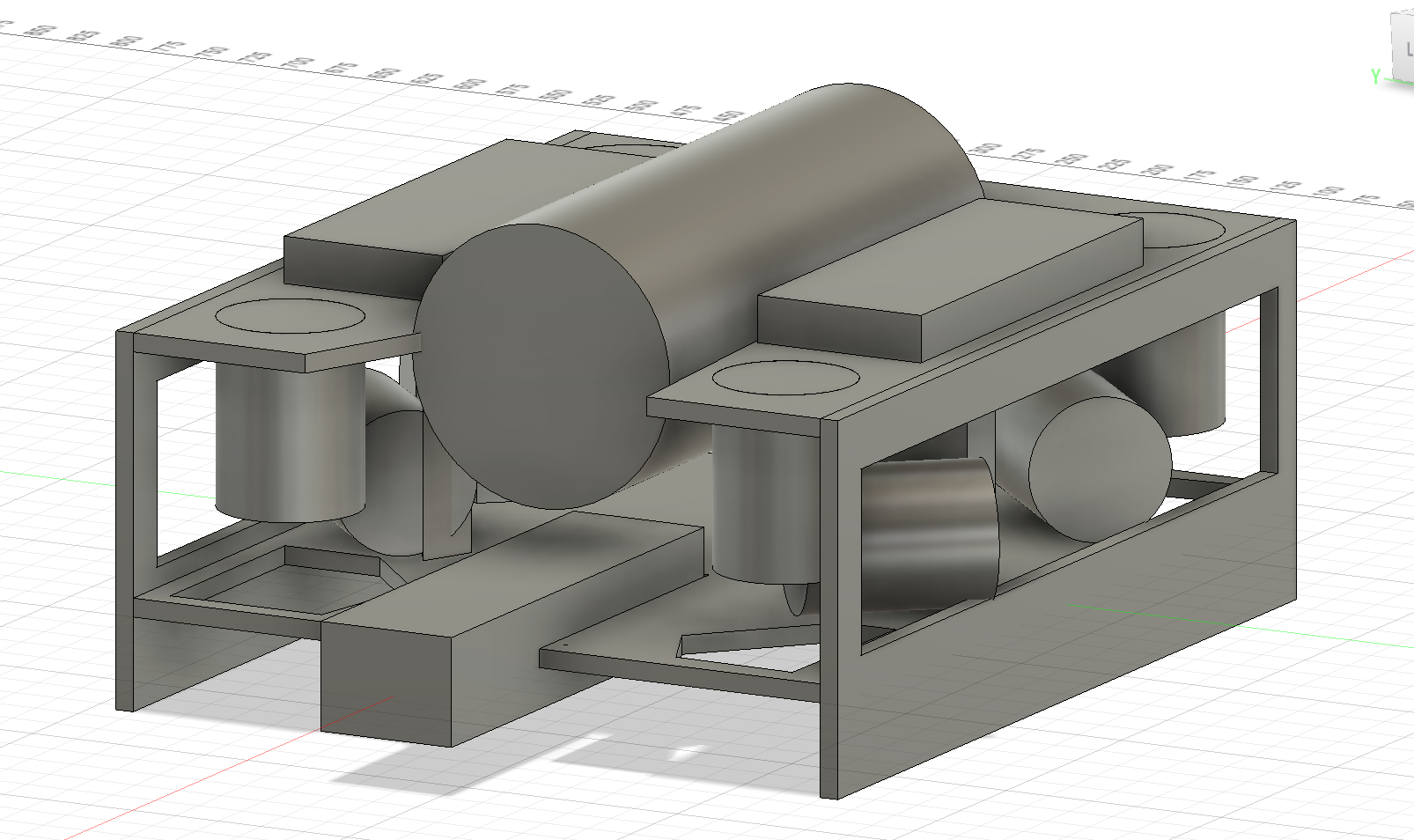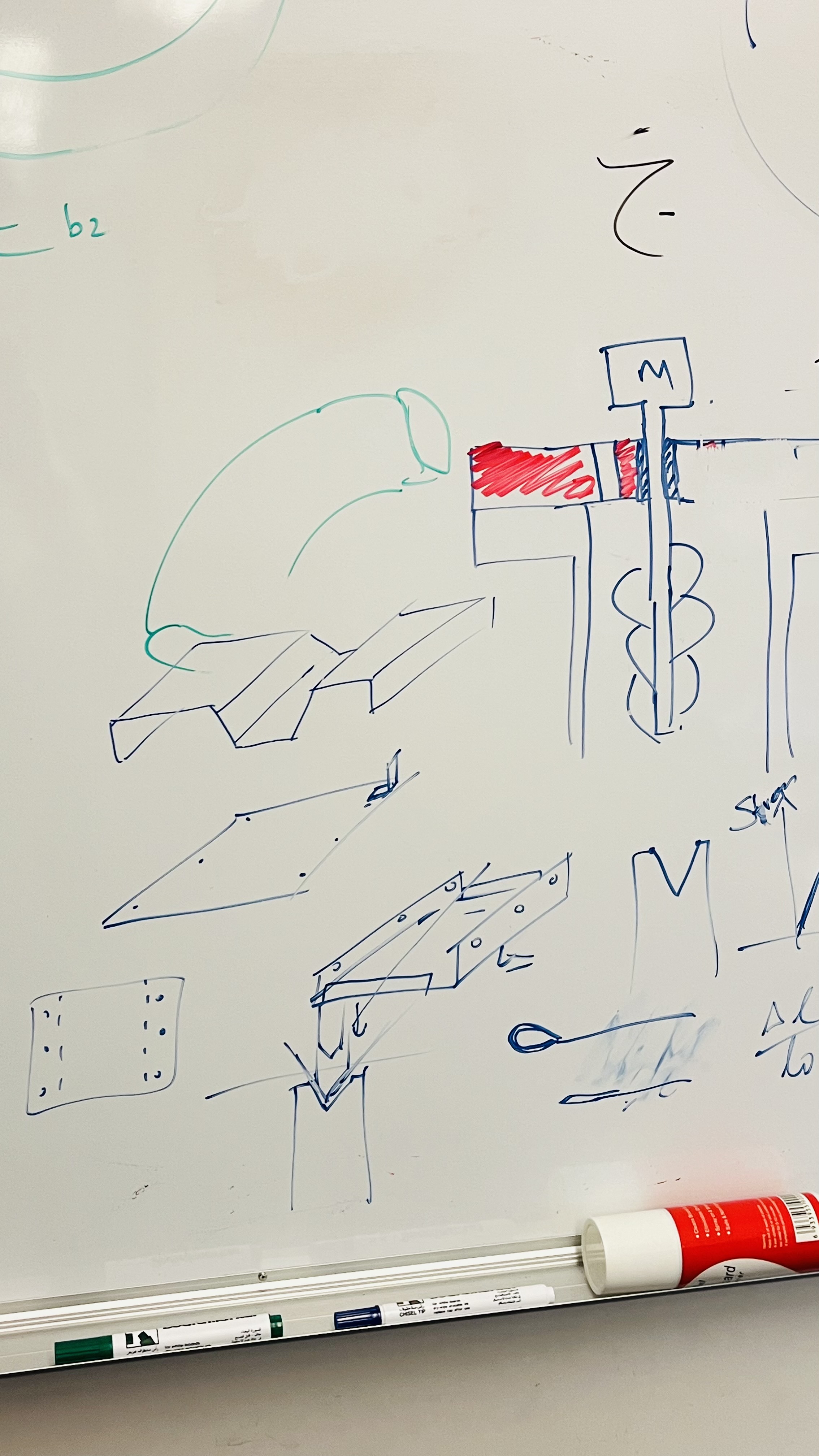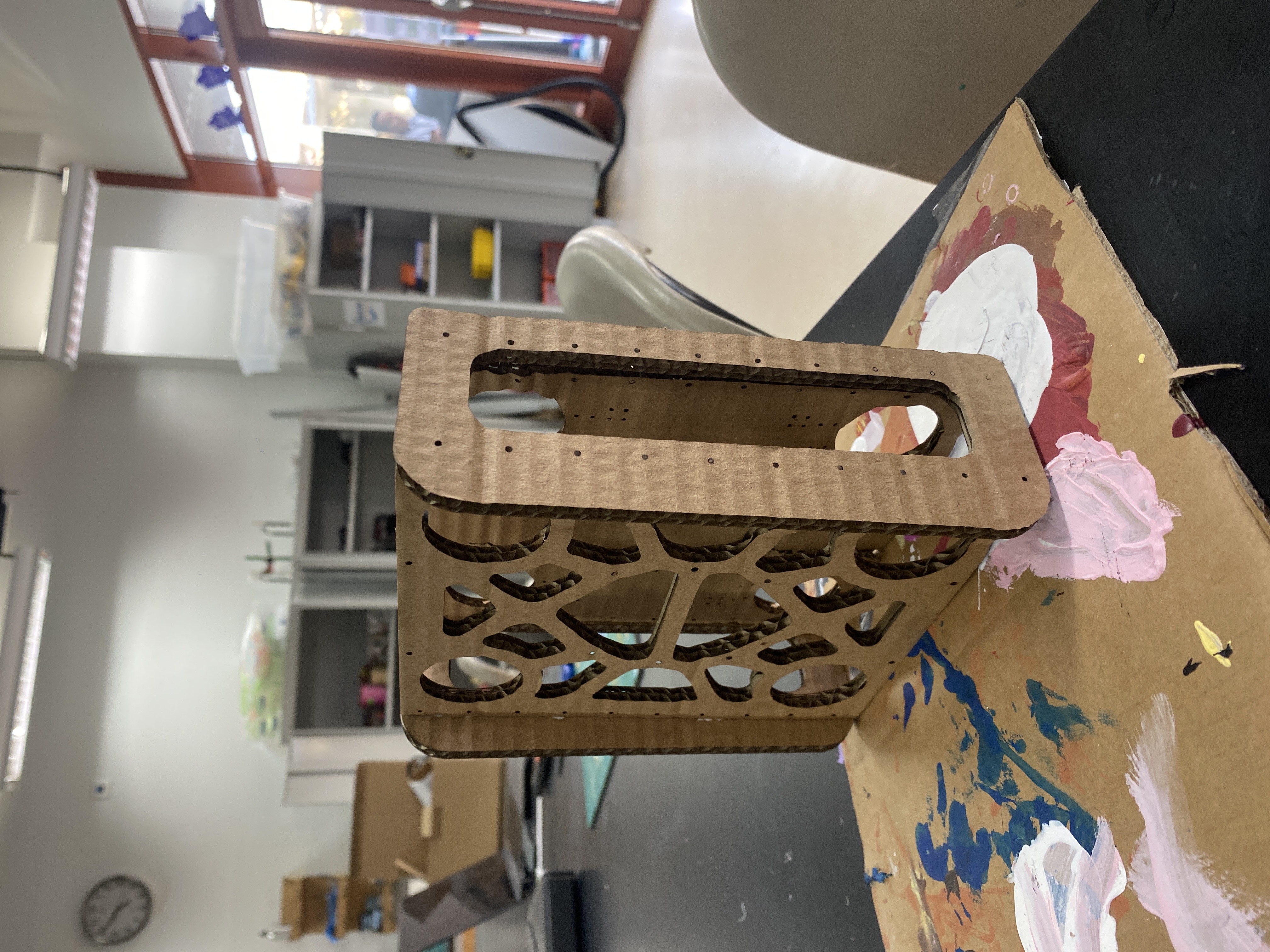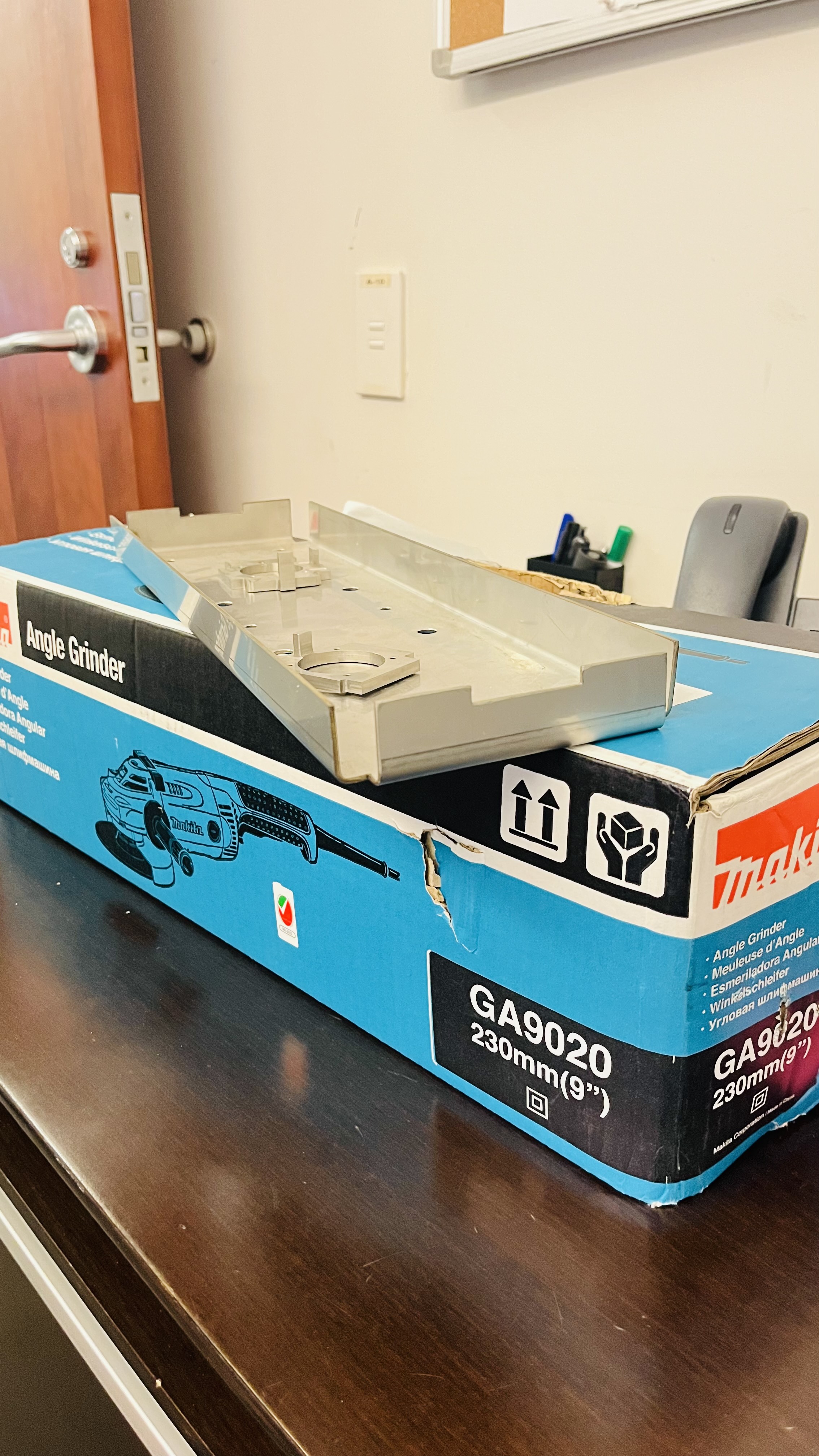This text is summarized by ChatGPT and accounts the recent procedural issues with a significant impact on our progress.
Chronological Documentation of Events
At the beginning of the academic year in September 2024, the MATE ROV competition team, known as ROVolution, was formed through a structured process. The team operated under the mentorship of a faculty advisor, with members contributing approximately 20 hours per week to the project. Team formation followed a merit-based selection procedure that included formal sign-ups through SchoolsBuddy during designated cycles, followed by interviews to assess candidate qualifications and team fit.
The team established clear operational protocols from the outset. Original members who have put in significant time and effort were held to strict procedural standards, including mandatory SchoolsBuddy registration. The faculty advisor emphasized compliance with these protocols, threatening to remove members who failed to follow proper registration procedures or attend Wednesday meetings. This created an understanding that team membership was contingent upon adherence to established procedures.
The team progressed significantly with their ROV project throughout the first two seasons (cycles), developing team dynamics based on shared commitment and workload distribution. Members invested substantial effort despite the challenges of balancing their IB coursework with competition preparations. By March 2025, the team was approaching project completion, having established effective workflows and responsibilities among existing members.
In March 2025, during Season 3 of the competition cycle, tensions emerged when the faculty advisor instructed the team to interview potential new members. The team conducted these interviews as requested, identifying one candidate as suitable while determining that others, including a late-applying student, would not contribute effectively to the team at this advanced stage of project development.
Despite the team's assessment, the faculty advisor unilaterally decided to add the late-applying student to the team. She informed the student of his acceptance before consulting with the team and subsequently mandated that the team accept him. When team members questioned this decision, the faculty advisor justified it by claiming that the student had been "unlucky" during Season 1 sign-ups due to "full teams" and deserved a chance. However, upon direct inquiry with the student, team members discovered he had not actually signed up during Season 1 but had instead decided to join in Season 3 after much of the project work had been completed.
This created significant frustration among team members who had been investing substantial time and effort since the beginning of the year. The team already faced challenges with workload distribution, including dealing with an existing member who contributed minimally. They expressed concern that adding another late-entry member would further complicate their established dynamics and create additional "free-rider" problems that would demoralize the team and reduce overall productivity.
As tensions escalated, team members expressed their frustrations in private group chats. These discussions included some inappropriate language, threats to remove their contributions to the project in order to force the student's removal, plans to gather evidence, and suggestions to disassociate from the school program. The conversations also contained characterizations of the student as "unsigma" and claims that he was "good at glazing teachers," implying he gained favor through flattery rather than merit. Additionally, there were suggestions that the faculty advisor had engaged in "backdooring" or circumventing proper procedures to favor certain students.
These private discussions did not include bigotry or direct harassment, but did contain elements that could be interpreted as creating an unwelcoming environment, indirect defamation, and threats of self-sabotage.
One team member, who maintained a friendship with the student, attempted to resolve the growing tension by directly confronting the student about the problem. During this confrontation, the team member showed the student select portions of these private conversations—specifically dialogues about potential self-sabotage and expressions that could be perceived as hatred toward the student. The team member advised the student to voluntarily leave the team in light of these underlying tensions.
Importantly, these private conversations were not initially leaked completely to the administration. The student had given a glimpse of the content of the conversation. The administration became aware of their full content only after the first mandatory meeting, which explains the confusion during that initial meeting as the teachers did not yet have specific evidence of problematic communications.
Following the confrontation between the team member and the student, the faculty advisor organized a mandatory meeting that included the Principal and other faculty members and administration. Team members were pulled from their classes without prior notice to attend this meeting, denying them any opportunity to prepare responses.
During this initial meeting, the faculty advisor focused primarily on issues of inclusivity rather than specific accusations of misconduct. She presented her interpretation that the team had violated the school's inclusivity principles by resisting the student's addition to the team. She referenced the student handbook's definition of inclusivity, suggesting it required unconditional acceptance of all interested students. The Principal, lacking complete context of the situation, lectured the students on school values based on the limited information available to him.
The atmosphere of the meeting was intimidating, designed to pressure the team into confessing to exclusionary behavior rather than facilitating an open discussion about the circumstances. The administration did not present specific evidence of harassment or bullying during this meeting, as they had not yet received the full chat logs. Instead, they made general assertions about the team's unwelcoming attitudes toward new members.
At the conclusion of this first meeting, the administration requested evidence of team communications, after which they received the complete chat logs containing the problematic statements.
After receiving and reviewing the chat evidence, the faculty advisor organized a session with the team to instruct them on preparing written confessions or defenses. This follow-up meeting, unfortunately, failed to provide the clarity or resolution team members had hoped for.
The meeting primarily consisted of vague accusations without substantive evidence. Faculty supervisors made references to "harassment," "bullying," and violations of "inclusivity" principles without providing specific examples or clear definitions of how these terms applied to the team's actions. This created a challenging environment where team members were expected to defend themselves against undefined allegations.
One faculty member communicated that an important lesson from this situation was that "the world is an unfair place" and that accepting new team members at a supervisor's direction is totally normal. Team members found this messaging contradictory to the school's stated values around inclusivity and creating welcoming environments, as it essentially normalized hierarchical decisions that could undermine team cohesion.
When asked about the late-applying student's previous expression of interest in Season 1, the faculty advisor strongly affrimed that he had expressed interest during Season 1 or even the previous year during prop building. This was confusing and formal registration through SchoolsBuddy during Season 1 remains unverified. Some team members noted that the student may have expressed interest but from previous conversations with him, it was unlikely that he had signed up formally on Schools Buddy, as was required by many members.
Faculty administration defined "inclusivity" as requiring the unconditional acceptance of all interested students regardless of timing, procedures, or skill level. When team members attempted to draw parallels to other competitive scenarios (such as joining a sports team midseason), faculty redirected the conversation to focus on the team's alleged misconduct rather than addressing the substantive question about reasonable boundaries for inclusion in competitive teams.
When team members attempted to further seek clarification about the specific nature of the accusations or the administration's perspective on the situation, they were silenced or redirected. The faculty advisor stated that the meeting was only about the student's perspective. However, this approach created a situation where team members felt they were defending against ambiguous charges with no opportunity to understand the specific concerns being raised.
The team was required to submit written defenses with very little time to prepare, which led to significant stress and confusion. They now had to respond to specific accusations based on private communications that they had not anticipated becoming part of the disciplinary process. Moreover, only select lines from their written defenses or confessions could be used against them, rather than considering the full context of the defense.
A subsequent meeting was held with the administration, during which the team would potentially face severe consequences for their actions. Prior to this meeting, at approximately 9:00 AM, an email was sent to team members' parents informing them of potential suspension and other disciplinary actions. Parents were given until 4:00 PM the same day (a workday) to raise any objections, a timeframe that many parents found difficult to accommodate due to professional obligations.
During this meeting, the faculty member that manages extracurricular activities stated that he would not be hearing any counterargument or clarification as the team's opinion had already been provided in the form of the essay (the team members were silenced when attempting to present their perspective). He expressed that the content of the leaked messages was so inappropriate he "doesn't want to say the word as a woman is in the room." He characterized the team's behavior as "collusion to exclude" the student, which he deemed "absurd." He emphasized that participation in extracurricular activities was "a given privilege" rather than a right, and that students lacked the authority to determine team composition.
The faculty member cited specific sections from the student handbook, stating that he had identified at least two Category Two violations and suggesting that some members' behavior constituted Category Three misconduct--the most serious level that could result in suspension or expulsion. He explicitly threatened suspension as a potential consequence.
The faculty member repeatedly asserted that MATE ROV was "not a competition but rather for everyone to learn," despite the team's understanding that they were preparing for a competitive event with regional qualifications at stake. He further explained that TKS was a department of KAUST, implying that any dissociation from TKS would constitute a dissociation from KAUST itself. When discussing the team's previous selection process, he dismissed the importance of the interviews we had conducted, stating that we were "not an independent business" and therefore shouldn't have autonomy over member selection. He also claimed that any sponsorships we had secured were obtained through the school's connections rather than through the team's own efforts.
The faculty advisor then outlined a plan for "reuniting the team," which included mandating the team to hire three additional members with specific diversity requirements. She then spoke about how the team was "in shambles" and implied that the situation must have affected all members significantly. When pressed about the diversity requirements for new hires, she offered contradictory guidance. She initially stated that while she personally disliked being viewed as a "diversity hire," neutral hiring processes would naturally achieve diversity. However, she then pivoted to argue that we should prioritize diversity over skill in the team's selection, suggesting that any justification based on merit alone indicated bias, particularly toward Grade 11 boys.
She specifically mandated that we must hire at least one female student to demonstrate inclusivity, adding that all three new members could be girls, but not necessarily boys since the team already included male students. When team members questioned this approach further, she reiterated that participation was a "privilege" and that we needed to demonstrate inclusive values rather than focusing on qualifications. Before concluding, she instructed that details of this disciplinary situation were not to be discussed outside the meeting.
The team expressed confusion over accusations of bias due to their consistent commitment to neutrality in member selection across genders, races, and grade levels. They have actively recruited female participants and included students from various grades through a structured interview process, maintaining that expertise remains their primary consideration. The limited participation of girls and students from certain grade levels stems not from discrimination but from individual preferences—some prioritize a team's competence while others seek a more comfortable environment working alongside friends. The team believes internal decisions reflect natural student autonomy in choosing teams aligned with personal goals rather than bias. Faculty members never explicitly defined the purpose of MateROV. Thus, the team thought that it was to compete and win rather than to teach due to the requirement to compete to qualify for the internationals competition and the faculty advisor's emphasis on the importance of the interview process and behavioral expectations.
Several parents of the students engaged in discussions with the faculty advisor. One parent, in particular, expressed that the student's actions were entirely unjustified. Although she had accepted the meeting invitation, she claimed to have a 'test' and left abruptly during the conversation. In separate discussions with other parents, she also stated that this would be the final consequence the students would face.
Shortly after these disciplinary meetings, a further conflict arose regarding a beach cleanup event that had been planned approximately one month in advance before the conflict. The team had organized this community service initiative with multiple supervisors, including the faculty advisor, Boy Scout leaders trained in first aid, and appropriate safety equipment including first aid kits, extra water, sunscreen, trash bags, and gloves.
The team promoted the event on Instagram to encourage broader community participation. The faculty advisor expressed strong disapproval of this social media promotion, citing concerns about liability and supervision. She characterized the cleanup as a "school-related activity" requiring formal registration and approval processes, despite the team's understanding that it was a student-led community service initiative similar to other Service in Action activities that regularly occurred at the school.
The faculty advisor insisted on receiving completed registration forms from all participants, which proved difficult to obtain on short notice. When team members failed to meet with her during their 30-minute lunch period (which was particularly challenging during Ramadan when many students attended mosque), the faculty advisor directly contacted the Boy Scout supervisor and unilaterally canceled the beach cleanup event.
This action further reinforced the team's belief that they were being subjected to double standards and punitive measures that went far beyond the original dispute over team membership—much like when she barred them from using sponsorship funds to purchase ROV parts due to alleged non-compliance with disciplinary protocols.
Underlying Systemic Issues Throughout the Conflict
Throughout these events, several systemic issues emerged that complicated the situation:
Misrepresentation and Misinformation
The faculty advisor had apparently led the student to believe he had been "selected by the ROVolution team" when in fact he was added unilaterally by the faculty advisor herself. This misrepresentation created unnecessary animosity between the student and the team, as team members perceived the student as having circumvented established procedures rather than understanding he had been misled about the selection process.
Inconsistent Application of Rules
The team observed significant inconsistencies in how rules and policies were applied. Original team members were threatened with removal for procedural violations like missing SchoolsBuddy registration, while the student faced no consequences for bypassing the Season 1 application process entirely. The team was held to strict standards regarding meeting attendance and registration protocols, while exceptions were made selectively for other students.
Power Imbalance and Intimidation
Administrative meetings were conducted in ways that maximized intimidation rather than fostering constructive dialogue. The team was consistently denied adequate preparation time, confronted with accusations that evolved as new evidence emerged, threatened with serious disciplinary consequences including suspension, and silenced when attempting to seek clarification or present alternative perspectives.
Contradictory Directives
The team received contradictory guidance throughout the conflict. the faculty advisor simultaneously criticized "diversity hires" as contrary to merit while mandating hiring decisions based explicitly on gender and grade level. The team was told MATE ROV was "not a competition" despite its competitive structure with regional qualifications. They were instructed to conduct interviews and make membership decisions, then overruled and criticized for the decisions they made.
Misapplication of School Policies
School policy on inclusivity was arguably misinterpreted. The student handbook defined inclusivity as providing "equitable access to opportunities and resources," not unconditional acceptance regardless of qualifications or timing. The team's interview-based selection process was consistent with equitable access, as it applied the same standards to all applicants.
Similarly, accusations of Category Three misconduct appeared disproportionate to the actual behaviors in question. While the private communications certainly contained inappropriate language and problematic suggestions, they did not clearly constitute the "persistent pattern of significantly harming or holding back the learning of others" that the handbook identified as Category Three misconduct. The chat evidence revealed frustration, poor judgment, and inappropriate planning, but lacked elements of bigotry or direct harassment that would typically warrant the most severe disciplinary measures.
Aftermath
Following these events, the student ultimately joined a Grade 9 team instead of the original ROVolution team. According to reports from the Grade 9 team, the student showed limited engagement with MATE ROV activities, often playing Minecraft during meeting times rather than contributing to the project. This raised questions about whether the intense conflict had been necessary, given the student's apparent level of interest in the competition. In fact, the faculty advisor had another discussion with the student and a few team members on the situation. When asked how he felt, he said "he doesn't care" and it shouldn't be taken so far.
Meanwhile, the ROVolution team learned a difficult lesson about institutional power dynamics and the consequences of expressing discontent, even in private communications. The experience left them with the understanding that maintaining positive relationships with authority figures may sometimes require subordinating their own perspectives on fairness and procedural consistency—a lesson about organizational politics that came at significant emotional cost. After a reflection, the team acknowledged that the problem would have been solved quickly by complying to the faculty advisor rather than going through a crucible and a kafkaesque battle of perserving one's ego.
The team's subsequent activities, including community service initiatives, faced heightened scrutiny and additional administrative barriers, suggesting that the repercussions of the conflict extended beyond the immediate issue of team membership to affect all aspects of the team's operations and community engagement.
